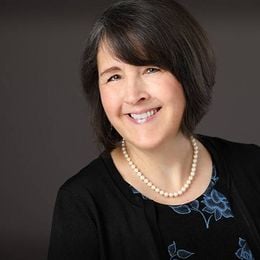Sunscreen Dispensers Are Popping Up in Recreation Areas
This effort seeks to combat the growing number of skin cancer deaths
Millions of Americans will head to the beach this summer, but not everyone will remember to pack the sunscreen.
The Melanoma Foundation of New England has your back. And your arms and your legs and your face.
They do, that is, if you happen to live in one of the communities that took the organization up on its offer of free sunscreen dispensers for lakes, camps, playgrounds, amusement parks and sports arenas.
The bright yellow dispensers, mounted on poles, serve as a visible reminder of the importance of sunscreen and make its use convenient, said Deb Girard, executive director of the Melanoma Foundation of New England.
“It creates some awareness, and that’s what we really need to do,” she said.
In 2014, the U.S. Surgeon General issued a call to action to prevent skin cancer, calling it “a major public health problem.”
Rates Are Rising
According to recent research:
- The number of cases of melanoma is increasing each year; the incidence doubled from 1982 to 2011.
- More than 76,000 new cases of melanoma are expected to be diagnosed this year. Over 10,000 people will die of the disease.
- Being over 65 is a risk factor for melanoma, possibly because of the ultraviolet exposure over a lifetime.
- Before age 50, women are more likely to be diagnosed with melanoma, but by age 60, men get it at twice the rate.
- Light-skinned people are at the greatest risk of melanoma. But those with darker skin, including people of color, can also get it, and may not be diagnosed until the cancer is more advanced, making it harder to treat.
“Melanoma is still a significant diagnosis and in the past year or so, we have begun to see some drugs to allow people to live a bit longer,” Girard said. “But what we really need to do is stop people from getting melanoma to start with.”
That means applying sunscreen; covering up with protective clothing, including a hat and sunglasses; not using tanning beds; and taking the most caution outside between 10 a.m. and 2 p.m., when the sun’s rays are at their strongest.
You’re Doing It Wrong
One big problem with sunscreen, Girard said, is that even when people use it, it may not be doing them much good. Common mistakes:
- You’re not putting enough on. The American Academy of Dermatology says only about 25 to 50 percent of people use the recommended amount of sunscreen. You should measure out about one ounce, or enough to fill a shot glass.
- You don’t apply it a 15 to 30 minutes before you go outside.
- You don’t spread it around your entire body.
- You don’t reapply it every two hours.
Girard said her organization has given away 275 sunscreen dispensers, which come with a case of sunscreen, so far this year. Most have been distributed in New England, though communities in New York, California, Nebraska, Illinois and Georgia have also received them.
Information on purchasing dispensers may be found by contacting the Melanoma Foundation of New England. The $400 price includes the dispenser, pole and a case of sunscreen (which supplies about 2,700 pumps).
Get It Checked
Melanoma can spread to other parts of the body quickly. But when found early and treated, the cure rate is nearly 100 percent, the American Academy of Dermatology says.
The organization recommends looking for the ABCDEs of melanoma in the moles on your skin:
A = Asymmetry: one half of the mole is different from the other half
B = Border: a mole with an irregular, poorly defined or scalloped border
C = Color: varies from one area to another, may be tan, brown, black, white, blue or red
D = Diameter: usually greater than 6 mm, or the size of a pencil eraser
E = Evolving: the mole changes shape, size or color over time.


